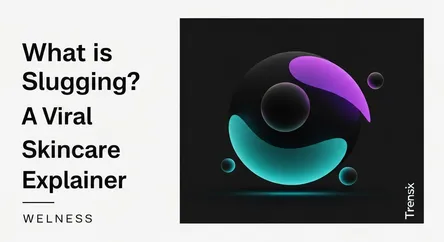Wellness
What is Slugging? A Viral Skincare Explainer

Discover the viral K-beauty skincare trend, 'slugging'. Learn how applying an occlusive layer can lock in moisture for hydrated, glowing skin.
What is it?
Slugging is a skincare technique that involves applying a thin layer of an occlusive product, like petroleum jelly (e.g., Vaseline or Aquaphor), to the face as the final step of a nighttime routine. The term was coined because the glossy finish resembles the trail left by a slug. Originating from the K-beauty world, this method is designed to create a physical barrier on the skin. This barrier prevents transepidermal water loss (TEWL) overnight, effectively locking in moisture and the skincare products applied beforehand.
Why is it trending?
Slugging gained massive popularity through social media platforms like TikTok, where the hashtag has garnered hundreds of millions of views. Influencers and users showcase dramatic before-and-after results, attributing dewy, baby-soft skin to this simple and inexpensive hack. Dermatologists have long recommended the principle for healing dry, irritated skin or compromised skin barriers, which has lent credibility to the trend. Its rise is also fueled by a broader interest in barrier repair and intense hydration, especially for those who have over-exfoliated or have chronically dry skin.
How does it affect people?
For individuals with dry, dehydrated, or compromised skin, slugging can be highly beneficial. It helps to repair the skin's natural barrier by trapping moisture, which can soothe irritation, reduce redness, and leave the skin feeling soft and plump. However, it is not suitable for all skin types. Those with oily or acne-prone skin may find that the occlusive layer traps oils and bacteria, potentially leading to breakouts. It's crucial to apply it over a clean face and to avoid using it on top of potent active ingredients like retinoids, as it can increase their potency and cause irritation.